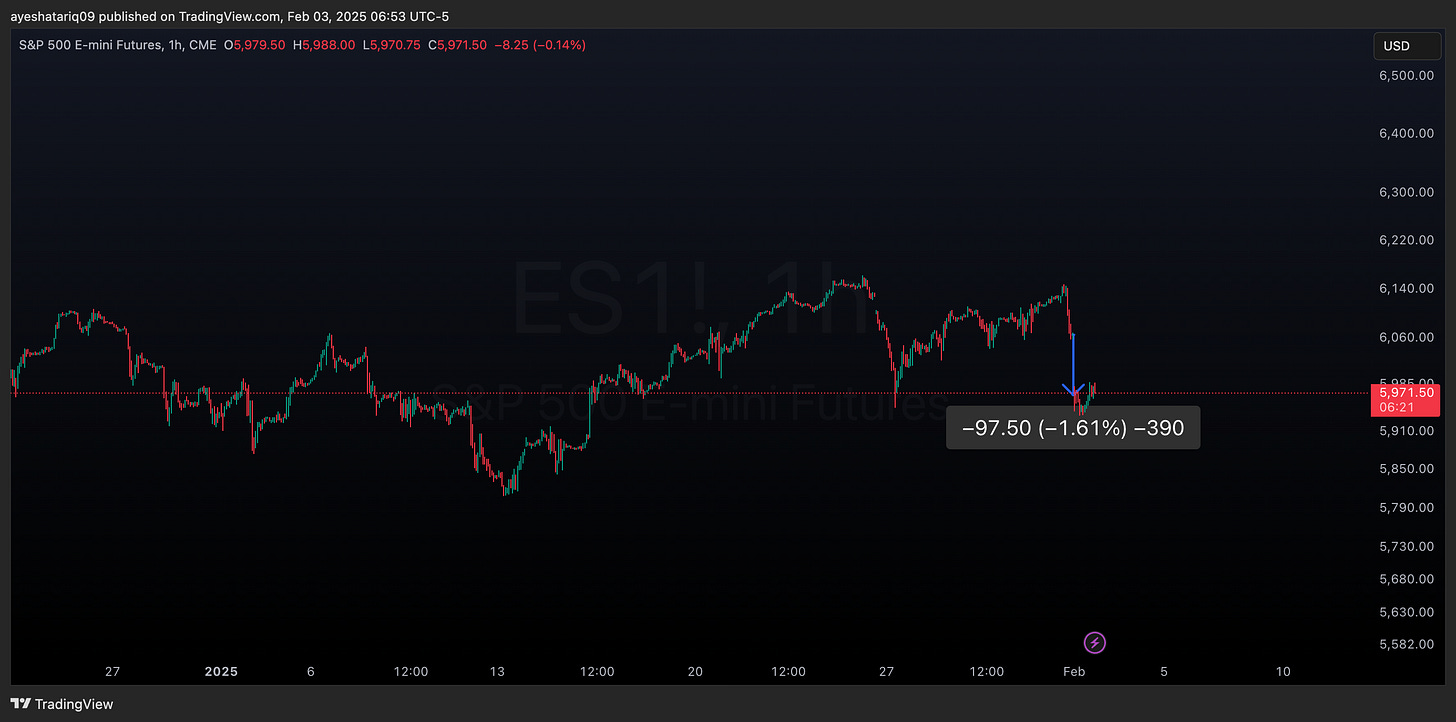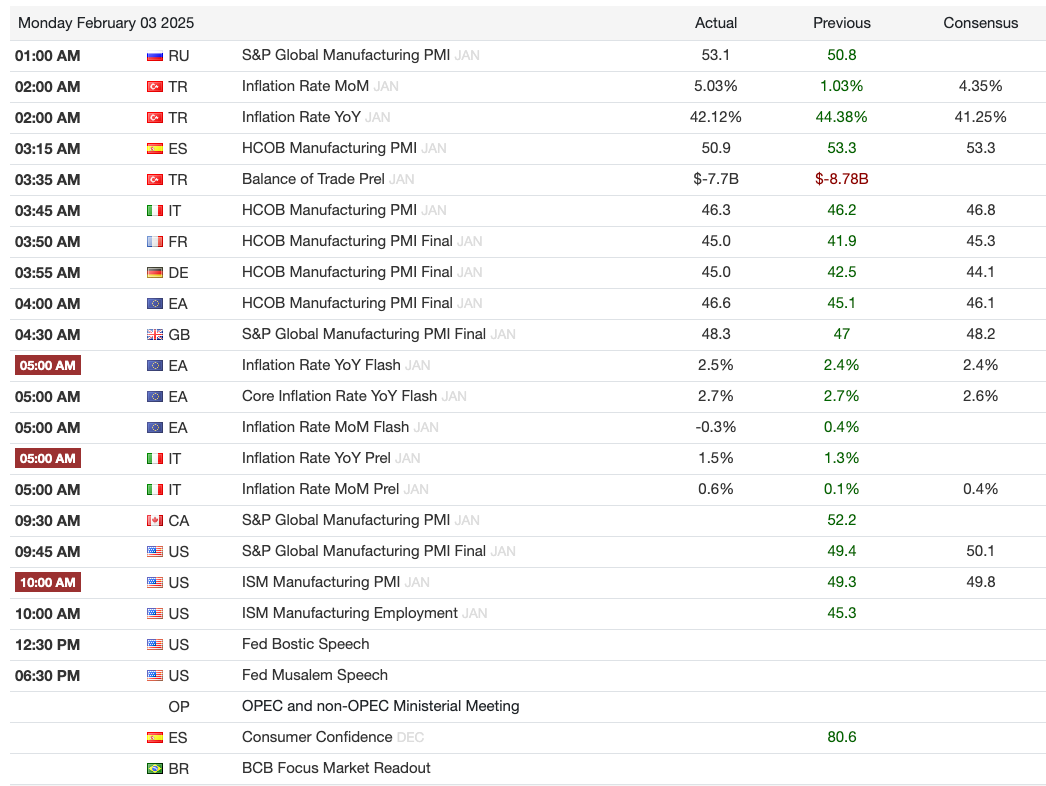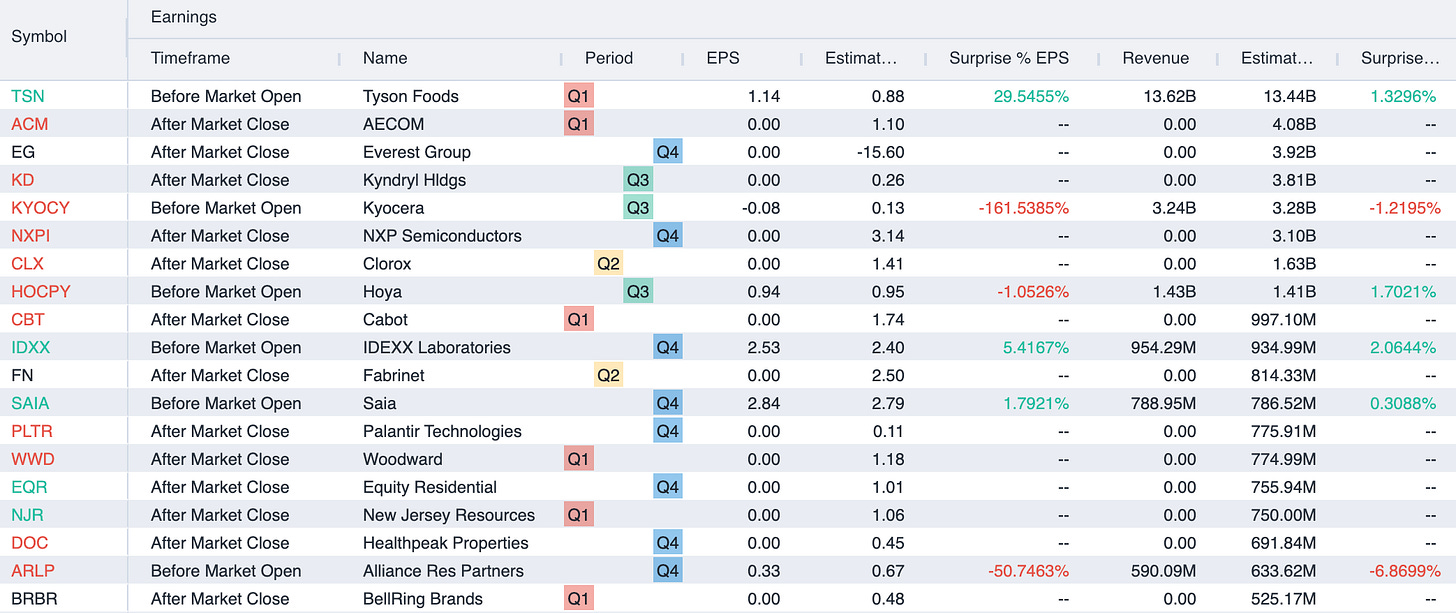- MacroVisor
- Posts
- Breakfast Bites: Tariff Wars
Breakfast Bites: Tariff Wars
Markets open lower, across the world on news of tariffs, and retaliatory action. What this means for investing environment right now.
Rise and shine everyone. This is one of those tough Monday mornings. We’ve got what looks very much like the beginning of a trade war and it’s weighing on the markets. President Trump levied tariffs on Canada and Mexico at 25% and China at 10%. Both Canada and Mexico are already retaliating with counter-tariffs, while China has discussed taking measures but we don’t know what they are as yet.
S&P 500 futures opened over -1.6% lower, gapping down from Friday’s close. The Nasdaq, Dow, and the Russell 2000 also saw similar moves.

The USD and Yields are spiking. Surprisingly, gold & silver have remained muted but, Oil & Gas are spiking because of the Canada angle. Stocks are down mostly across the board, not just any one sector in particular. In keeping with commodity prices, the least affected is the Oil & Gas sector, while the most affected so far, are homebuilders and industrials. There’s also pressure on the agriculture sector. I read that farmers in the US are already worried about revenues, given they depend quite a lot on exports to Canada and Mexico.
We also saw similar market reactions in Japan, Korea, and of course, China. For Japan and Korea, many of the auto manufacturers actually have factories in Canada and Mexico. Stock prices will likely continue to see some pressure until companies start to put out a clear direction of how they are going to tackle these increased costs.

We will also wait to see whether some of these tariffs are negotiated down. The demand from the US is to stop Fentanyl crossing the border, so if the countries start to discuss measures to combat this situation, we may see some resolution.
It’s a lot of uncertainty, and there are still too many unknowns for anyone to have an informed opinion of where this is all headed.
What we do know about tariffs in general and their implications for investing:
Tariffs add to costs, if trade continues
Countries can choose to reduce imports of tariffed goods but this will likely take some time. This reduces revenues of companies producing those goods.
Companies will likely pull back on investments, which could be temporary until they understand more about the impact of these tariffs on their books. But basically, they will have less extra spending money
In extreme cases, this could lead to fewer buybacks, having to take out more debt, issuing more shares, and in the worst case defaulting on debt.
Overall, we’re seeing higher yields, and a higher dollar which is driven by the fear of inflation and slower growth. This weighs on stocks prices, as we all know.
These issues will have to be resolved if the tariffs are here to stay. And gradually, with time, they will be. But in the interim it should be pretty clear that we’re going to keep seeing some pressure on the economy and on stock prices.
Be careful out there and don’t panic.
Chart of the Day
The last two weeks have seemed very long and it’s been a struggle to keep up. This is certainly one reason why. President Trump is on track to sign the most number of executive orders of any president in the last 50 years!!

What we’re watching
US ISM Manufacturing Numbers at 10am ET
Outcome of the OPEC+ meeting today
Calendars
(news taken from Reuters, FT, Bloomberg; Calendar from Trading Economics)


Reply